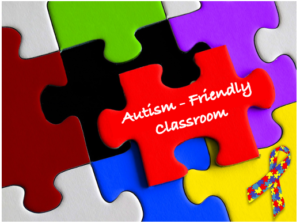
With inclusion being at the forefront of many educators’ minds right now, it is essential to take specific special educational needs into account as much as possible. Some may say that an autism-friendly classroom is nigh on impossible to achieve. However, we feel strongly that there are many steps you can take to improve the experience for your autistic learners while still allowing good practice for all. Continue reading for some things you can try.
1. Fix It Fast
Classrooms in older buildings are renowned for dripping taps and flickering lights. Sensory triggers, such as sound and light, can have a significant detrimental impact on a student’s day. Something that we find annoying, like the humming of a laptop, can be overwhelming for someone with autism. Rather than allowing issues with the building and technology to be left, encourage someone to fix them as soon as possible.
2. Minimalistic Approach
Teachers are creative beings by nature. Bulletin boards crafted to perfection. Washing lines with models of the solar system hanging from them. Laminated hands showing the numbers in the five times table. Teachers do it all, and it looks impressive for most people. Unfortunately, sensory overload can lead to students switching off, focusing on everything but their work, and meltdowns where they cannot control their emotions and behavior. Reducing the number of items within the classroom and sticking to a more minimalistic approach can make a significant difference for your autistic pupils.
3. Workstations
Sometimes, having our own little area where we can block out the world seems desirable. This might be an everyday thing for the autistic students in your class. Creating a workstation, specifically for them, to allow this to happen could be a game-changer for you and a life-changer for them. These dividers for school are an excellent invention. The fact that they are portable means that your workstation is not a permanent addition. Being flexible to your students’ needs at a particular moment in time is far more inclusive than having fixed ideas.
4. Visual Timetable
Change can be a disruptive thing in life. Autistic people tend to prefer structure and routine. Visual timetables allow the daily plan to be seen at a glance. Use large symbols to represent the lessons you will be doing and add the words underneath too. Although this is a great strategy for students with autism, you will likely find that it helps others in your class as well.
5. Break Things Down
Even with the use of a visual timetable, you may find that your autistic pupils find tasks a little challenging. Of course, it depends entirely on the individual and the subject matter. However, breaking down tasks into smaller parts can really help. You could use an approach like ‘steps to success’ where you put each individual process onto a footprint. The students can then tick them off as they go. Alternatively, you could have just a straightforward list. Some children may need a break after doing a couple of steps and you will need to build a break or reward into the middle of your structure. Once you have got to know your individual pupils, it will be easier to make decisions about this.


Leave a Reply